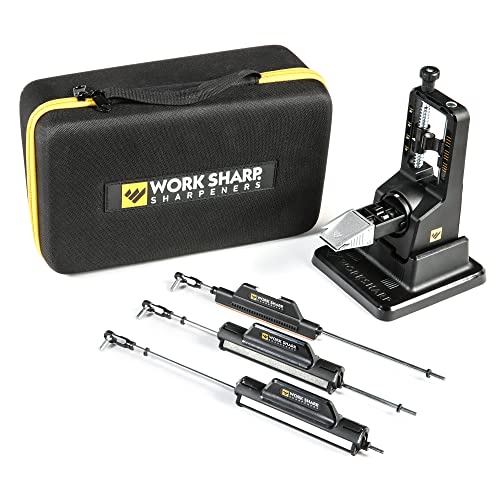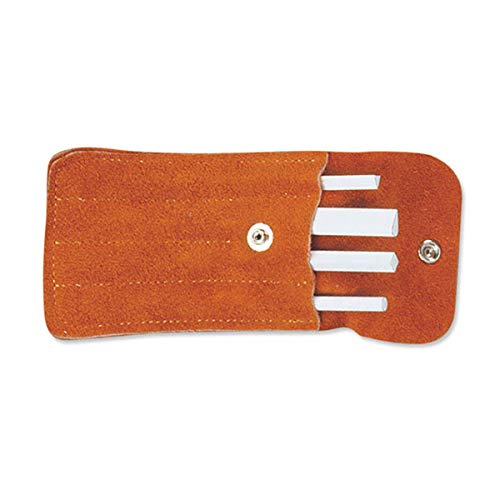
Can a simple nail file be used to sharpen a knife? This question has been a topic of debate among kitchen enthusiasts and avid knife sharpeners for years. While some argue that a nail file can indeed be used to sharpen a dull knife, others firmly believe that it is not a suitable tool for this purpose.
So, can you really sharpen a knife with a nail file?
Sharpening a knife involves removing a small amount of metal from the blade’s edge to create a finer and sharper cutting surface. While a nail file can also remove material, it is designed for shaping and smoothing nails, not for sharpening knives.
One of the main reasons why a nail file may not be effective for sharpening a knife is the difference in hardness between the two materials. Most nail files are made of steel or ceramic, which are significantly softer than the steel used in knife blades. This means that as you try to sharpen the knife, the nail file’s surface will wear down more quickly than the knife’s edge, leading to an uneven and ineffective sharpening process.
Is it possible to sharpen a knife with a nail file?
Sharpening a knife with a nail file is not the most effective method, but it can be done in a pinch. Keep in mind that a proper knife sharpener or sharpening stone is recommended for achieving the best results. However, if you only have a nail file available, here are some steps to try:
- Choose a nail file with a fine-grit surface. Coarser files may damage the blade or create uneven edges.
- Lay the knife on a flat surface and hold it securely with one hand.
- With the other hand, angle the nail file against the blade at a 20-degree angle.
- Gently stroke the knife’s edge along the nail file, using long and smooth motions.
- Repeat this motion on both sides of the blade, starting from the base and moving towards the tip.
- Continue stroking the knife along the nail file until you feel the edge becoming sharper.
- Remember to maintain the same angle throughout the sharpening process to ensure a consistent edge.
- Once you are satisfied with the sharpness, carefully wipe the blade clean to remove any metal shavings.
While using a nail file can temporarily improve the sharpness of a knife, it is not a long-term solution. Over time, the nail file’s abrasive surface will wear down and may not provide optimal results. It is highly recommended to invest in a proper sharpening tool for maintaining the longevity and performance of your knives.
Always prioritize safety when sharpening knives. Use caution and keep fingers clear of the blade to avoid accidents. If you are unsure or uncomfortable with sharpening your knives, it is best to seek assistance from a professional or use a professional knife sharpening service.
Benefits of using a nail file for knife sharpening
When it comes to sharpening a knife, many people may not immediately think of using a nail file. However, using a nail file to sharpen a knife can have several benefits.
1. Portability
A nail file is small and lightweight, making it easy to carry around. Whether you are camping, hiking, or simply in need of a quick knife sharpening at home, a nail file can be a convenient tool to have on hand.
2. Versatility
Nail files come in a variety of shapes and grits, allowing you to choose the one that best suits your knife sharpening needs. The different grits on a nail file can be used for various levels of sharpening, from minor touch-ups to full blade restoration.
Furthermore, nail files can also be used on different types of knives, such as pocket knives, kitchen knives, or even gardening tools. This versatility makes a nail file a useful tool for any knife owner.
It is important to note that while a nail file can be effective for minor sharpening tasks, it may not be suitable for heavily damaged or dull blades. In such cases, it is recommended to seek professional sharpening services or use dedicated knife sharpening tools.
In conclusion, using a nail file for knife sharpening offers the advantages of portability and versatility. It can be a handy tool for quick touch-ups or for maintaining the sharpness of various types of knives. However, for more significant sharpening needs, it is advisable to use specialized tools.
Step-by-step guide to sharpening a knife with a nail file
Sharpening a knife with a nail file is a simple and cost-effective way to maintain the sharpness of your blade. If you don’t have access to a knife sharpener, a nail file can serve as a handy alternative. Follow these steps to sharpen your knife using a nail file:
Step 1: Choose the right nail file
Not all nail files are suitable for sharpening knives. Look for a metal nail file with a fine grit. The grit is usually printed on the packaging or stated clearly on the file itself. Avoid using nail files with coarse grits, as they may damage the blade.
Step 2: Secure the nail file
Place the nail file securely on a flat and stable surface. You may want to use a table or countertop that won’t be damaged by the filing motion. Make sure the nail file is stable and won’t move around during the sharpening process.
Step 3: Position the knife
Hold the knife firmly in one hand with the blade facing away from you. Place the blade flat against the nail file, ensuring that the cutting edge is in direct contact with the file.
Step 4: Sharpen the knife
Using moderate pressure, move the blade across the nail file in a sweeping motion. Start at the base of the blade and move towards the tip, maintaining a consistent angle. Repeat this motion several times, applying even pressure along the entire length of the blade.
Note: Be careful while sharpening the knife and always watch your fingers.
Step 5: Check for sharpness
After sharpening for a few passes, check the sharpness of the knife by gently running your finger along the blade. If it feels sharper and smoother, you’re on the right track. If not, continue sharpening the knife using the same technique until the desired sharpness is achieved.
Tip: You can also test the sharpness of the knife by slicing through a piece of paper or a soft vegetable. Be cautious and ensure proper handling while performing this test.
Step 6: Clean and store the knife
Once you’re satisfied with the sharpness of the knife, clean it thoroughly with soap and water to remove any metal filings. Rinse and dry the blade completely before storing it in a safe place.
By following these steps, you can effectively sharpen a knife with a nail file. Remember to exercise caution and take your time to achieve the desired sharpness. Happy sharpening!










